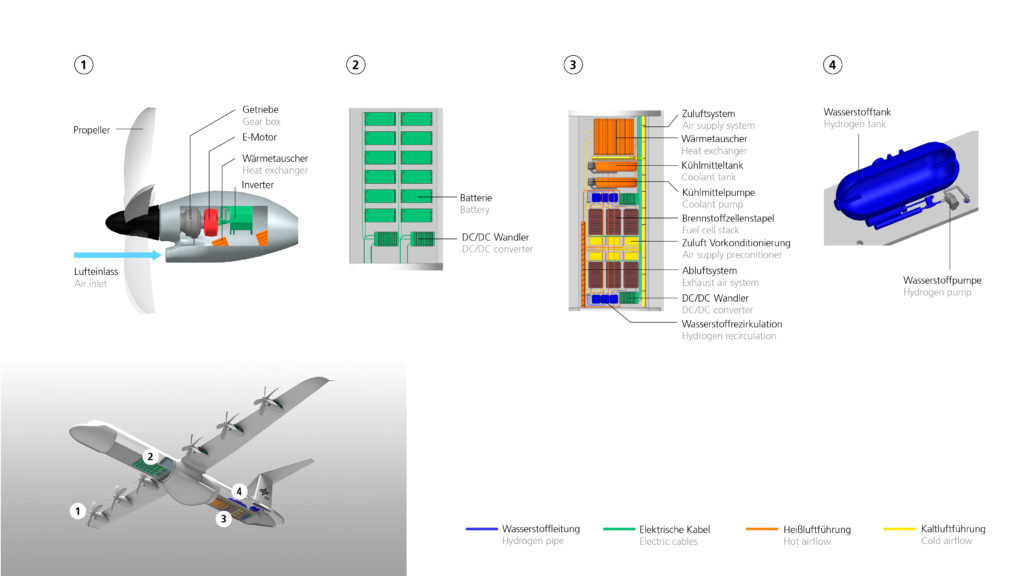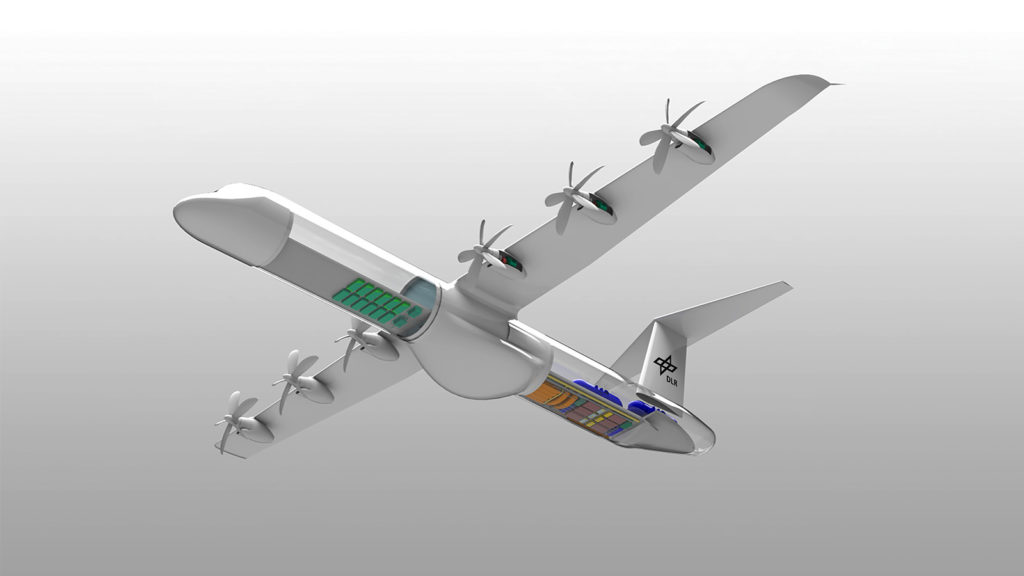Regional aircraft of the future
The DLR Institute of Electrified Aero Engines is dedicated to research into innovative, low-emission aircraft engines for civil aviation, aimed at achieving quieter and more climate-friendly air transport in the future. The scientific work of the institute follows a whole-system approach to electrified aircraft propulsion and is thus closing gaps in the portfolio of German aircraft engine research.
The H2ELECTRA model shows the high technical system complexity of the new types of propulsion systems that are the focus of research at the DLR Institute. It portrays the feasibility of electrically propelling a regional aircraft using hydrogen. The aircraft is designed for a range of 1000 nautical miles (about 1850 kilometres) with 50 passengers at a flight Mach number of 0.5 (about 612 kilometres per hour). The flight altitude is almost 5000 metres and the payload is six tonnes (50 PAX * 100 kilograms + 1000 kilograms of cargo).
Future propulsion concepts open up new opportunities for aircraft design and integration. The model represents a propulsion topology with a fuselage-integrated electric powertrain with six electric motors and propellers. The individual components of the drive architecture are visible through the transparent fuselage, so visitors can understand how the propulsion system works.
The H2ELECTRA model shows the technological potential and future prospects for air transport and addresses current key topics relating to electric flight. In doing so, it not only addresses the potential, but also the technical challenges. Find out about the latest research topics and the latest developments in key research projects at the DLR stand.
Link:
German Aerospace Center (DLR)
Institute of Electrified Aero Engines
Professor Lars Enghardt · Email Lars.Enghardt@DLR.de


